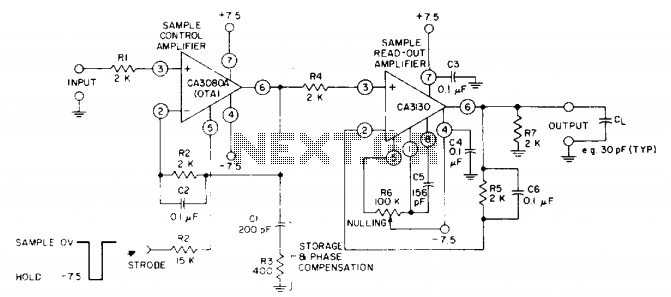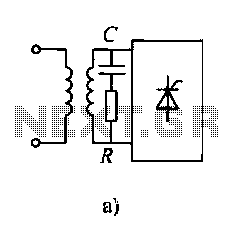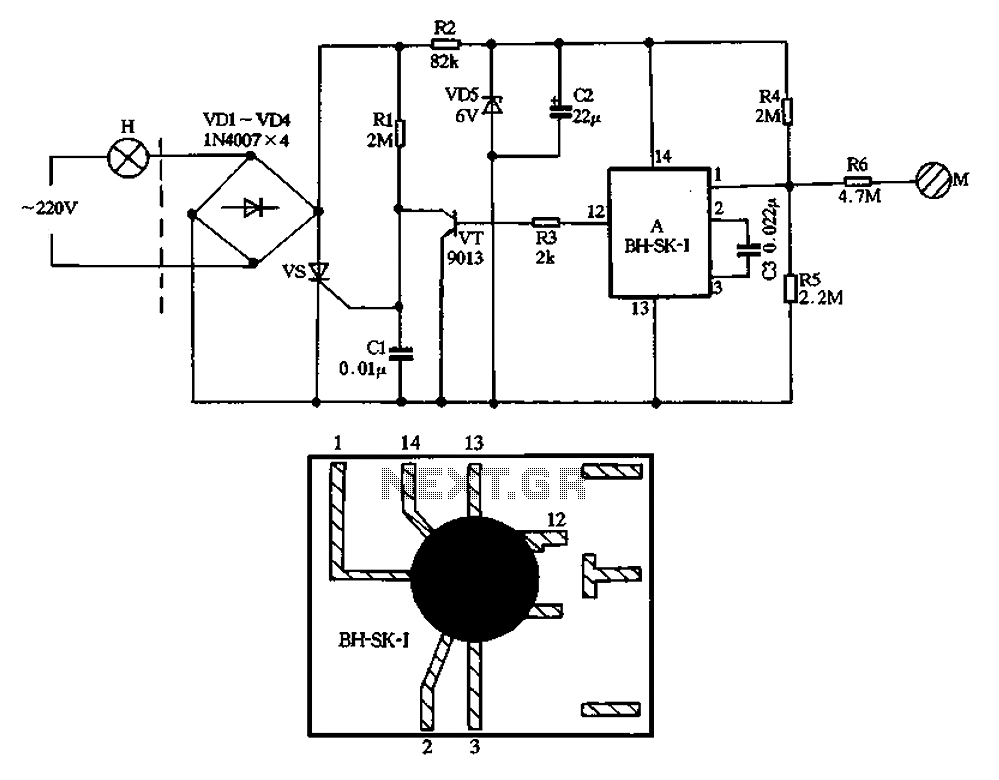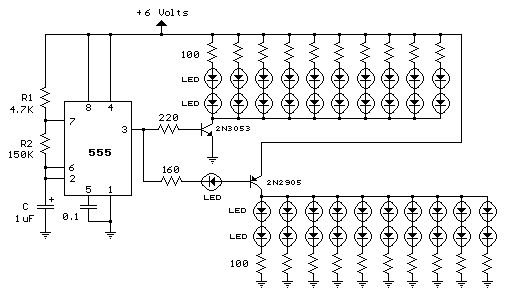
Capacitive switch circuit diagram
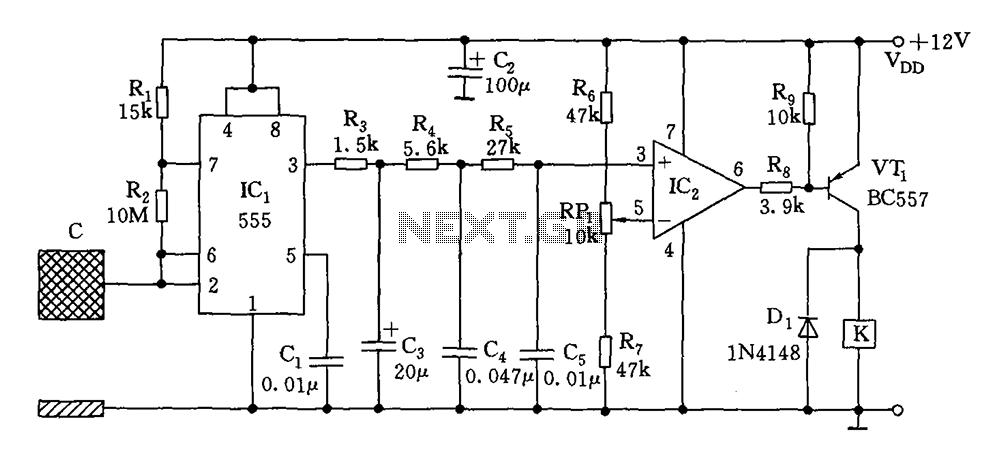
The switch circuit consists of a capacitive oscillator, an integration network, and a comparator circuit that controls a relay. When a body comes close to the induction plate, the inductive capacitance to ground increases, causing the 555 astable multivibrator to start or change its oscillation frequency. This results in an alternating square wave output from the network, which is fed into IC2 (LM324) along with the phase from the comparator and a set reference voltage. This configuration generates a negative pulse that triggers VT1, activating the relay (K) and switching on the load circuit. Conversely, when the body is removed, the circuit disconnects. The size of the induction plate should not be lower than the oscillation frequency of several thousand kHz.
The circuit described functions as a proximity switch utilizing capacitive sensing to detect the presence of a nearby object, typically a human body. The primary components include a capacitive oscillator, which generates an oscillating signal based on the capacitance changes induced by nearby conductive objects. The 555 timer, configured in astable mode, serves as the core oscillator, producing a square wave output that varies in frequency depending on the capacitance detected.
The integration network processes the output from the 555 timer, shaping the signal to ensure that it is suitable for comparison. The LM324 operational amplifier acts as a comparator, comparing the oscillation frequency against a predefined reference voltage. When the capacitive effect from the object alters the frequency beyond a certain threshold, the comparator outputs a negative pulse.
This negative pulse is crucial as it triggers the transistor VT1, which in turn activates the relay (K). The relay serves as a switch for the load circuit, allowing it to be turned on when the object is detected and turned off when it is removed. The design ensures that the relay is deactivated when the proximity condition is no longer met, effectively controlling the load based on the presence of the detected object.
The selection of the induction plate size is critical for the performance of the circuit. It must be designed to operate at frequencies in the range of several kilohertz to ensure reliable operation. A larger plate may increase sensitivity, while a smaller one may lead to reduced detection range and reliability. Overall, this circuit is an effective solution for applications requiring non-contact switching based on proximity detection.As illustrated, the switch circuit by capacitive oscillator, the integration network, and a comparator circuit relay control circuit. When the body close to the induction metal plate, inductive capacitance to ground increases, the composition of the 555 astable multivibrator start-up or change in the oscillation frequency, alternating square wave output of the network after the three points, added to IC2 (LM324) with the phase of the comparator, and the set reference voltage, and outputs a negative pulse jump change, VT1 conduction, K pull, load circuit switched on. Conversely, disconnected. Induction plate size selection, should not be lower than the oscillation frequency of several thousand kHz.
The circuit described functions as a proximity switch utilizing capacitive sensing to detect the presence of a nearby object, typically a human body. The primary components include a capacitive oscillator, which generates an oscillating signal based on the capacitance changes induced by nearby conductive objects. The 555 timer, configured in astable mode, serves as the core oscillator, producing a square wave output that varies in frequency depending on the capacitance detected.
The integration network processes the output from the 555 timer, shaping the signal to ensure that it is suitable for comparison. The LM324 operational amplifier acts as a comparator, comparing the oscillation frequency against a predefined reference voltage. When the capacitive effect from the object alters the frequency beyond a certain threshold, the comparator outputs a negative pulse.
This negative pulse is crucial as it triggers the transistor VT1, which in turn activates the relay (K). The relay serves as a switch for the load circuit, allowing it to be turned on when the object is detected and turned off when it is removed. The design ensures that the relay is deactivated when the proximity condition is no longer met, effectively controlling the load based on the presence of the detected object.
The selection of the induction plate size is critical for the performance of the circuit. It must be designed to operate at frequencies in the range of several kilohertz to ensure reliable operation. A larger plate may increase sensitivity, while a smaller one may lead to reduced detection range and reliability. Overall, this circuit is an effective solution for applications requiring non-contact switching based on proximity detection.As illustrated, the switch circuit by capacitive oscillator, the integration network, and a comparator circuit relay control circuit. When the body close to the induction metal plate, inductive capacitance to ground increases, the composition of the 555 astable multivibrator start-up or change in the oscillation frequency, alternating square wave output of the network after the three points, added to IC2 (LM324) with the phase of the comparator, and the set reference voltage, and outputs a negative pulse jump change, VT1 conduction, K pull, load circuit switched on. Conversely, disconnected. Induction plate size selection, should not be lower than the oscillation frequency of several thousand kHz.
Warning: include(partials/cookie-banner.php): Failed to open stream: Permission denied in /var/www/html/nextgr/view-circuit.php on line 713
Warning: include(): Failed opening 'partials/cookie-banner.php' for inclusion (include_path='.:/usr/share/php') in /var/www/html/nextgr/view-circuit.php on line 713
